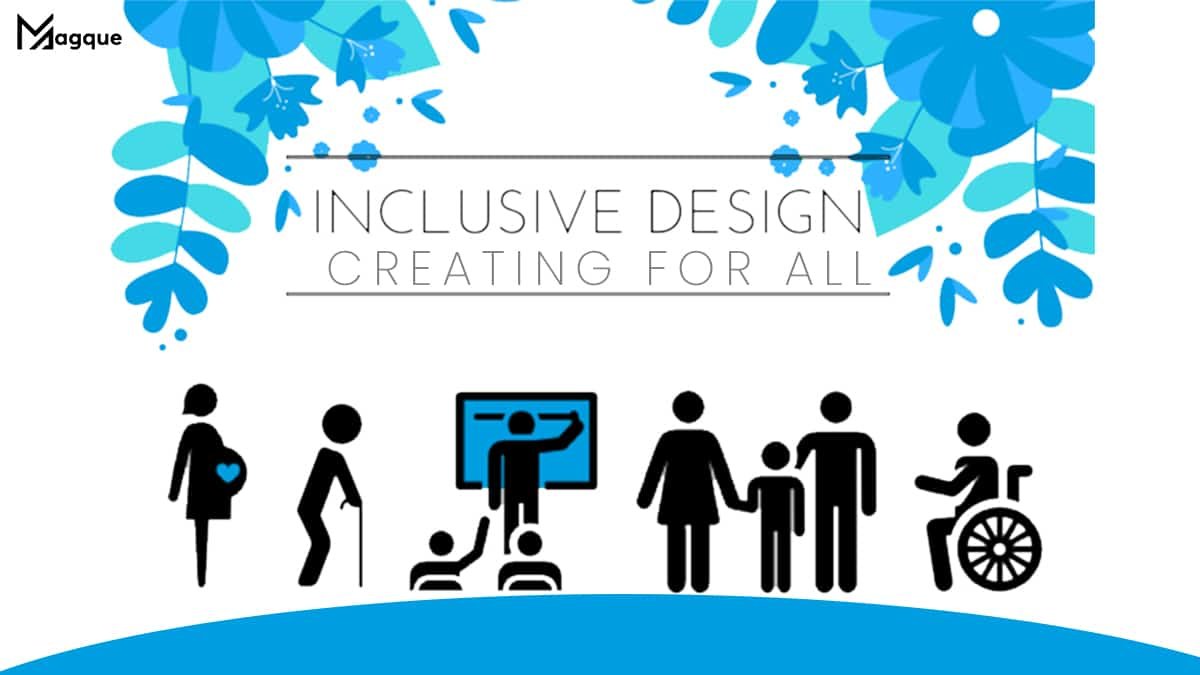Hey there, fellow digital wanderer! Ever thought about the vast array of people surfing the web? From tech-savvy teenagers to grandparents exploring the wonders of the internet, there’s a diverse crowd out there. But wait, have you considered if your website is inclusive enough to cater to all these folks? That’s where inclusive design swoops in to save the day!
Picture this: you’re on a journey to craft a website that welcomes everyone with open arms. You want everyone to navigate your digital space seamlessly, regardless of their abilities. That’s the essence of inclusive design – ensuring that everyone, regardless of their disabilities, can access and enjoy your website.
Why is inclusive design so crucial? Imagine strolling down a street lined with shops, but there are no ramps for those in wheelchairs. Frustrating, right? It’s the same with websites. If your site isn’t designed with accessibility in mind, you’re essentially slamming the door on potential visitors. But fear not, for inclusive design holds the key to unlocking a world of opportunities for everyone.
Now, let’s delve into some practical tips for infusing inclusivity into your web design endeavors:
Understanding User Needs:
Before starting the design process, take a moment to understand your users’ diverse needs. Conduct thorough research and engage with users from different backgrounds to gain insights into their experiences and challenges.
Prioritize Accessibility:
Make accessibility a top priority throughout your design process. Ensure that your website is compatible with screen readers, has straightforward and intuitive navigation, provides alternative image text, and offers keyboard navigation options.
Embrace Diversity in Design:
Celebrate diversity in your design choices. Consider incorporating multiple font sizes and color schemes to accommodate users with visual impairments. Opt for responsive design to ensure your website looks and functions seamlessly across various devices and screen sizes.
Test, Iterate, and Improve:
Testing is critical to ensuring the effectiveness of your inclusive design efforts. Conduct usability testing with individuals from diverse backgrounds and incorporate their feedback to continuously improve your website’s accessibility.
Educate and Advocate:
Spread awareness about the importance of inclusive design within your organization and the broader community. Advocate for accessibility standards and actively participate in initiatives to make the digital world more inclusive.
In the grand tapestry of the internet, every thread counts. By weaving inclusivity into the fabric of your website, you’re not just creating a digital space – you’re crafting a welcoming haven where everyone feels valued and empowered.
So, fellow digital dreamer, are you ready to embark on this journey of inclusive design? Let’s join hands and pave the way for a web that embraces all. Together, we can turn pixels into pathways of inclusion and pixels into possibilities!
Magque: Making the Web Accessible, One Design at a Time
As a part of our commitment to inclusivity, Magque is dedicated to helping businesses create websites that are accessible to all users. Our team of experts specializes in inclusive design practices, ensuring that your website is visually stunning and functional for every visitor. Let’s collaborate to make your digital presence a beacon of inclusivity in the vast expanse of the internet. Contact us today to embark on your journey towards a more inclusive web!
FAQs
Q1. What exactly is inclusive design?
Inclusive design refers to creating products, services, and environments accessible and usable by individuals with diverse abilities, backgrounds, and preferences. It aims to ensure that everyone, regardless of their disabilities or limitations, can interact with and benefit from the designed solution.
Q2. Why is inclusive design important?
Inclusive design is essential for fostering equality, diversity, and accessibility in various aspects of life, including technology. By prioritizing inclusivity, we can break down barriers and create environments where everyone feels welcomed, valued, and empowered. Moreover, inclusive design leads to better user experiences, increased engagement, and broader market reach.
Q3. How does inclusive design differ from accessibility?
While accessibility focuses on making products and environments usable by individuals with disabilities, inclusive design takes a broader approach. Inclusive design not only addresses accessibility concerns but also considers the diverse needs, preferences, and circumstances of all users, including those with temporary impairments or situational limitations.
Q4. What are some common misconceptions about inclusive design?
One common misconception is that inclusive design is only relevant to individuals with disabilities. In reality, inclusive design benefits everyone, as it enhances usability, flexibility, and overall user experience. Another misconception is that inclusive design is difficult or expensive to implement. In truth, many inclusive design strategies are simple, cost-effective, and yield significant long-term benefits.
Q5. How can I incorporate inclusive design into my projects?
Incorporating inclusive design into your projects starts with raising awareness and understanding the principles and best practices. Begin by researching, engaging with diverse users, and considering their needs and perspectives throughout the design process. Prioritize accessibility, embrace diversity in design choices, and continuously test and iterate to improve inclusivity. Additionally, advocating for inclusive design within your organization and industry can drive positive change and promote a culture of inclusivity.
Read Also This – Inclusive Design Creating for Diverse Audiences













